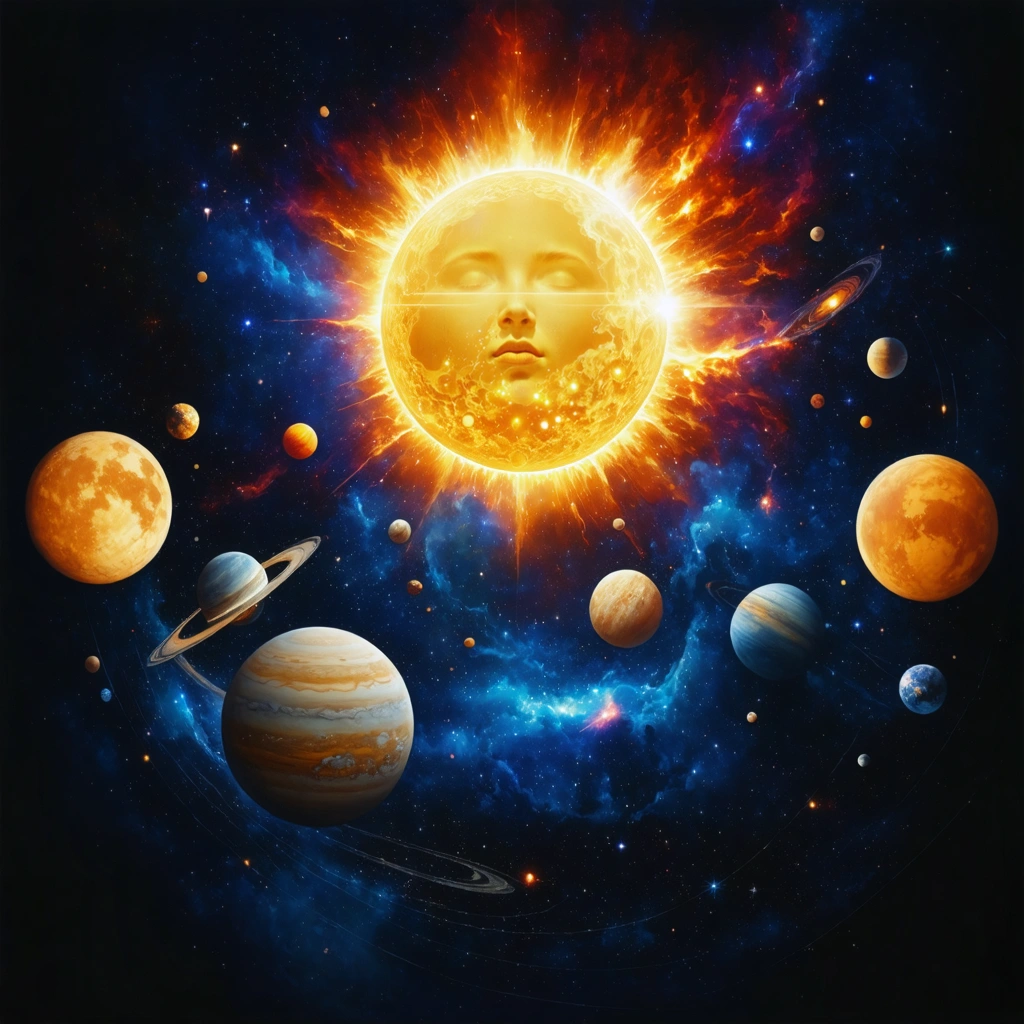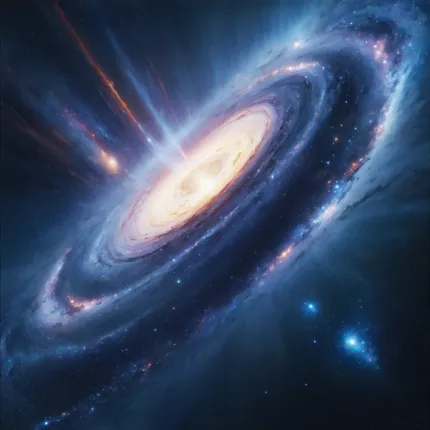
Exploring the Cosmic Canvas: Why Visualizing the Tata Surya Matters
Have you ever gazed up at the night sky, feeling both awe and curiosity about the vast expanse above? The solar system, or tata surya as it’s known in Indonesian, isn’t just a scientific concept confined to textbooks and observatories. It’s a breathtaking cosmic neighborhood teeming with wonder, waiting to be explored not only through data but also through art. Yet, despite this grandeur, many people struggle to truly visualize and appreciate the intricate beauty of the tata surya. When we hear “solar system,” our minds might conjure vague images of planets orbiting a sun, but these mental pictures often lack the vibrancy and depth that the cosmos actually holds.
This gap between knowledge and imagination can make the vastness of space feel distant, abstract, and even intimidating. How do we bridge this divide between cold facts and emotional connection? How can the tata surya transform from a mere scientific framework into a source of inspiration and aesthetic pleasure? Herein lies the power of solar system art — a dynamic medium that captures the essence of the cosmos in ways words alone cannot.
The Power of Gambar Tata Surya: Bringing the Universe to Life
Imagine a beautifully crafted gambar tata surya — an illustration that doesn’t just show planets as colored circles but conveys the swirling storms on Jupiter, the icy rings of Saturn, or the fiery hues of the sun with vivid realism. These artworks serve as a bridge between the scientific and the poetic, inviting us to experience the cosmos intimately. But beyond mere decoration, solar system art plays several crucial roles:
- Educational Engagement: Visual depictions make complex astronomical concepts accessible, especially for students and enthusiasts trying to grasp celestial mechanics.
- Inspiration for Creativity: Artists and storytellers draw from these images to imagine new worlds, fueling innovation and cultural expression.
- Emotional Connection: Artistic renditions evoke a sense of wonder and belonging, reminding us that we are part of a larger universe.
Yet, not all images are created equal. The challenge lies in creating illustrations that are scientifically accurate while also emotionally resonant. This balancing act is what makes tata surya art a unique and powerful form of communication.
What This Article Will Unveil
In the sections that follow, we will embark on a journey through the captivating world of solar system art. You’ll discover how artists interpret and reimagine the tata surya, blending science and creativity to produce mesmerizing gambar tata surya that captivate minds and hearts alike. We will explore:
- The history and evolution of solar system illustrations — from early hand-drawn maps to cutting-edge digital renderings.
- The techniques and tools artists use to depict planetary details, cosmic phenomena, and the interplay of light and shadow in space.
- How these artworks impact education, entertainment, and culture, helping people of all ages appreciate the grandeur of our cosmic neighborhood.
Whether you’re a science buff, an art lover, or just a curious soul fascinated by the stars, the fusion of tata surya and art promises to enrich your perspective. Prepare to see the solar system through a fresh lens — one that celebrates both the precision of astronomy and the boundless imagination that art inspires.

Exploring the Beauty of Tata Surya: Solar System Art and Illustrations
What is Tata Surya and Why Is It Important in Astronomy and Art?
The term tata surya is Indonesian for "solar system," referring to the Sun and all celestial bodies gravitationally bound to it, including planets, moons, asteroids, comets, and meteoroids. Understanding tata surya forms the foundation of astronomy, providing insights into the formation, evolution, and dynamics of our cosmic neighborhood.
Beyond scientific importance, tata surya has inspired countless artists and educators to create solar system art that captures its grandeur and complexity. These artistic representations, often in the form of gambar tata surya (solar system illustrations), help visualize the scale, composition, and beauty of our solar system, making it accessible and engaging to a broader audience.
What Are Common Themes and Styles in Tata Surya Illustrations?
Solar system art varies widely, from scientifically accurate diagrams to imaginative, stylized interpretations. Key themes include:
- Scale and Proportion: Illustrations often depict planetary sizes and distances to emphasize the vastness of space.
- Planetary Features: Artists highlight unique characteristics of planets, such as Saturn’s rings, Jupiter’s storms, or Mars’ red surface.
- Cosmic Phenomena: Comets, asteroids, the asteroid belt, and the sun’s corona are frequent subjects that add dynamism to the artwork.
- Educational Purposes: Scientific accuracy with labels, orbit paths, and comparative sizes to facilitate learning.
The diversity in gambar tata surya styles—from minimalist line art to vibrant digital paintings—reflects the intersection of science and creativity, aiming to inspire curiosity about the cosmos.
How Does Tata Surya Art Enhance Understanding and Appreciation of the Solar System?
Visual art plays a critical role in science communication. Solar system art helps translate complex astronomical data into intuitive images, making abstract concepts tangible. For example:
- Scale Models: By adjusting planetary sizes and orbits, illustrations convey relative distances and spatial relationships that are otherwise difficult to grasp.
- Interactive Visuals: Modern digital gambar tata surya allow users to explore planets in 3D, enhancing engagement and retention.
- Cultural Connection: Artistic depictions often incorporate mythological and cultural elements related to planetary names, enriching the storytelling aspect.
These approaches deepen viewers’ understanding of the solar system’s structure and inspire further exploration and study.
What Are Some Notable Examples of Tata Surya Illustrations and Their Impact?
Historically, artists like Chesley Bonestell and modern creators at NASA have produced iconic solar system art that has shaped public perception of space. For instance:
- Bonestell’s Space Art: His mid-20th century paintings combined scientific accuracy with dramatic visuals, inspiring generations during the space race era.
- NASA’s Educational Graphics: NASA’s official gambar tata surya provide updated, accurate depictions used worldwide in classrooms and media.
- Contemporary Digital Art: Platforms like Instagram and art communities showcase diverse interpretations of tata surya, blending science with fantasy to reach new audiences.
These examples highlight how art serves not only as a tool for education but also as a bridge connecting science, culture, and imagination.
How Can You Create or Access High-Quality Gambar Tata Surya?
If you wish to explore or create your own solar system art, consider the following:
- Use Reliable Scientific Data: Reference sources like NASA, ESA, or scientific publications to ensure accuracy.
- Choose the Right Tools: Digital illustration software (e.g., Adobe Illustrator, Procreate) or 3D modeling platforms can help create engaging visuals.
- Incorporate Educational Elements: Labels, scale bars, and orbit paths can transform your art into an informative piece.
- Explore Existing Galleries: Many online resources provide free or licensed gambar tata surya for educational and creative purposes.
By combining scientific rigor with artistic creativity, you can contribute to the rich tapestry of solar system art that educates and inspires.
Conclusion: The Enduring Appeal of Tata Surya in Art and Education
The tata surya continues to captivate humanity’s imagination through both science and art. Solar system art and gambar tata surya serve as essential tools that bridge complex astronomical knowledge and public understanding. Whether for educational purposes, cultural expression, or pure aesthetic appreciation, these illustrations allow us to glimpse the cosmos’ vast beauty and our place within it.
Embracing this fusion of art and science enriches our appreciation of the universe and fosters a lifelong curiosity about the wonders of the solar system.


